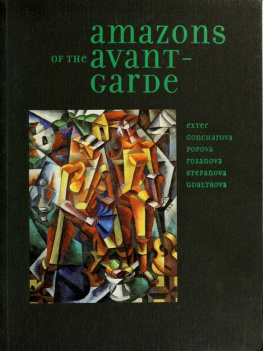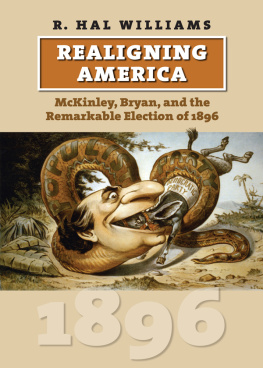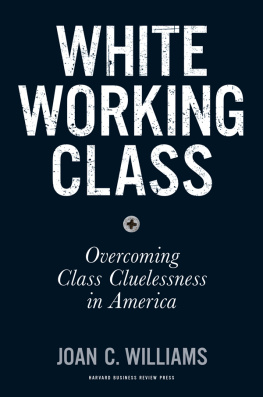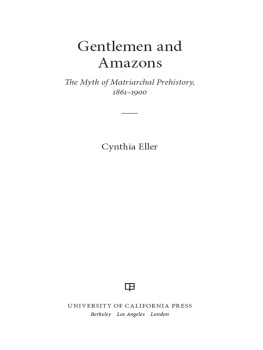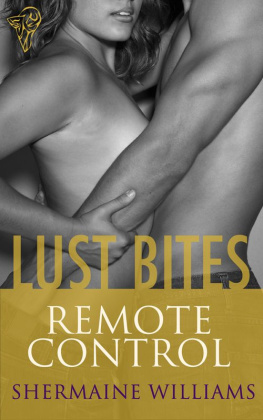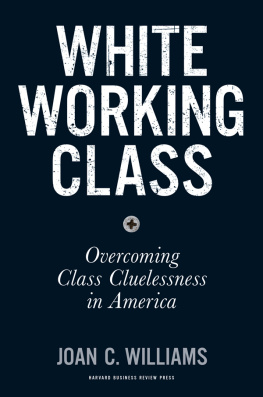AMAZONS IN
AMERICA
MATRIARCHS, UTOPIANS, and
WONDER WOMEN in U.S. POPULAR CULTURE
KEIRA V. WILLIAMS
Louisiana State University Press
Baton Rouge
Published by Louisiana State University Press
Copyright 2019 by Louisiana State University Press
All rights reserved
Manufactured in the United States of America
First printing
DESIGNER : Mandy McDonald Scallan
TYPEFACE : Whitman
PRINTER AND BINDER: Sheridan Books. Inc.
Library of Congress Cataloging - in - Publication Data
Names: Williams, Keira V., 1976
Title: Amazons in America : matriarchs, utopians, and wonder women in U.S.
popular culture / Keira V. Williams.
Description: Baton Rouge : Louisiana State University Press, 2019. | Includes
bibliographical references and index.
Identifiers: LCCN 2018035868| ISBN 978-0-8071-7047-2 (cloth : alk. paper) | ISBN
978-0-8071-7086-1 (pdf) | ISBN 978-0-8071-7085-4 (epub)
Subjects: LCSH: Women United States Social conditions. | Matriarchy United
States History . | Popular culture United States History . |
Amazons History .
Classification: LCC HQ1073.5.U6 W55 2019 | DDC 305.40973 dc 23
LC record available at https://lccn.loc.gov/2018035868
Some material from chapters 3 and 5 appeared previously as From Oz to Amazon Island, Journal of Popular Culture 50, no. 5 (2017). It is used here by permission.
The paper in this book meets the guidelines for permanence and durability of the Committee on Production Guidelines for Book Longevity of the Council on Library Resources.

Contents
The Multiple Meanings of Matriarchies in American History
The Intellectual and Historical Foundations of American Matriarchalism
Victorian Feminist Matriarchalism
Imperial Matriarchalism at the Chicago Worlds Fair
American Matriarchalism Goes Mainstream
Progressive Era Matriarchalism
Wonder Womans Matriarchalist Superheroics
Mid - Century Antimatriarchalism
The Matriarchies of the Womens Liberation Movement
Racist Matriarchalism
American Matriarchalism in the Early Twenty - First Century
Acknowledgments
Thank you to the following for funding assistance and/or for the use of collections: the Dibner Library of the History of Science and Technology at the Smithsonian Institution, the Library of Congress, the Newberry Library, the Popular Culture Association, the Texas Tech University Humanities Center, and the University of Chicago Special Collections.
Thank you for support (feedback, reference letters, snacks, drinks, hugs, and/or vacations): the Twinstitute, the A - Team , the Cougar Rodeo, my writing group at TTU, Bryant Simon, Aliza Wong, and Lisa Yaszek, whose thoughtful comments turned this messy manuscript into something readable. An additional shout - out to Lolly for slogging through that long, terrible first draft that I immediately slashed in two as soon as she read it.
This ones for Juicy, our beloved matriarch who left us too suddenly and too soon. I miss you every minute.
AMAZONS IN
AMERICA
INTRODUCTION
THE MULTIPLE MEANINGS OF MATRIARCHIES IN AMERICAN HISTORY
A myth no sooner comes into being than it is modified through a change in the narrator. Some elements drop out and are replaced by others, sequences change places, and the modified structure moves through a series of states, the variations of which nevertheless belong to the same set.
CLAUDE LEVI - STRAUSS, The Naked Man (1971)
I n 2016, the United Nations celebrated the seventy - fifth birthday of Wonder Woman by naming her an Honorary Ambassador to Women and Girls. That spring, Wonder Woman beautiful as Aphrodite, wise as Athena, swifter than Hermes, and stronger than Hercules permeated American popular culture anew after she appeared on the big screen for the first time in Batman vs. Superman: Dawn of Justice. The following year, women protested the inauguration of Donald Trump wearing the superheroines familiar star - spangled getup. In the summer of 2017, Wonder Woman sold out theaters with her very own feature - length film: Wonder Woman, directed by Patty Jenkins, garnered critical acclaim and quickly became the highest - grossing superhero origin film in Hollywood history. That fall, just after Hillary Clinton received the Wonder Woman Award from the Womens Media Center, American girls followed suit: according to data collected by Google, the Amazing Amazon was the most sought - after Halloween costume in the United States that year. The characters enormous popularity earned actress Gal Gadot a larger role in Justice League, DC Comics ensemble superhero film of November 2017, as well as her own franchise of forthcoming movies, indicating that the cultural fixation on this character is likely to continue for some time.
The explosion of interest in Wonder Woman in recent years is part movie - marketing genius and part feminist resurgence during a time in which the nations politics have shifted jarringly to the right. But Wonder Woman is more than just a generic symbol of womens empowerment; rather, the character brings with her an entire body of feminist theory that served as her very reason for being. Creator William Moulton Marstons original Wonder Woman and her many incarnations over time are examples of the continual re - creation of matriarchalism, an under - studied branch of American gender theory. Matriarchalism is a constellation of ideas about the history and nature of female power. It is a theory of history that posits that the earliest human societies were women - centered . It is a theory of biology premised upon discernible emotional, behavioral, and interpersonal distinctions between the sexes. It is a theory of social organization that assumes women - centered societies would necessarily be structured differently. It a theory of economics based on the idea that such societies would entail alternative systems of labor and distributions of wealth. It is a theory of politics that argues that female power would remake nations. And, crucially, it is a theory of gender that argues, depending on the creator and the era, that a matriarchal system is either the key to the ultimate achievement of ideals of equality and democracy, or it is the direst threat to the American way of life.
Matriarchalism has a long and varied history in the United States that scholars have yet to fully explore. Historian Cynthia Eller has studied the academic development of and archaeological evidence for what she calls the matriarchal myth, or the belief in universal, prehistoric matriarchal societies, which is a primary premise of most versions of American matriarchalism. Initially proposed by male anthropologists in the 1860s and 1870s, matriarchalism quickly made the leap to feminist circles; although it was largely discarded as a scholarly theory by early 1900s, it came roaring back three - quarters of a century later via feminist archaeology. Eller found that this myth is primarily a Western phenomenon, a recurring interest of scholars in Europe and North America in the late nineteenth and late twentieth centuries.
However, despite its erstwhile acceptance in academia, matriarchalism has been a near - constant staple of American popular culture for 125 years; indeed, scholar Sara Jones argues that Amazons are everywhere, once you know what youre looking for. Matriarchalism has spawned a wide range of texts, indicating that theories about female power have been a frequent, and often even a primary, preoccupation in American popular culture from the late Victorian era to the early twenty - first century. In Amazons in America, I chart the multiple manifestations of matriarchalism in the United States, with the goal of understanding the ways in which these texts reflect and refract the gender politics of the long twentieth century.





